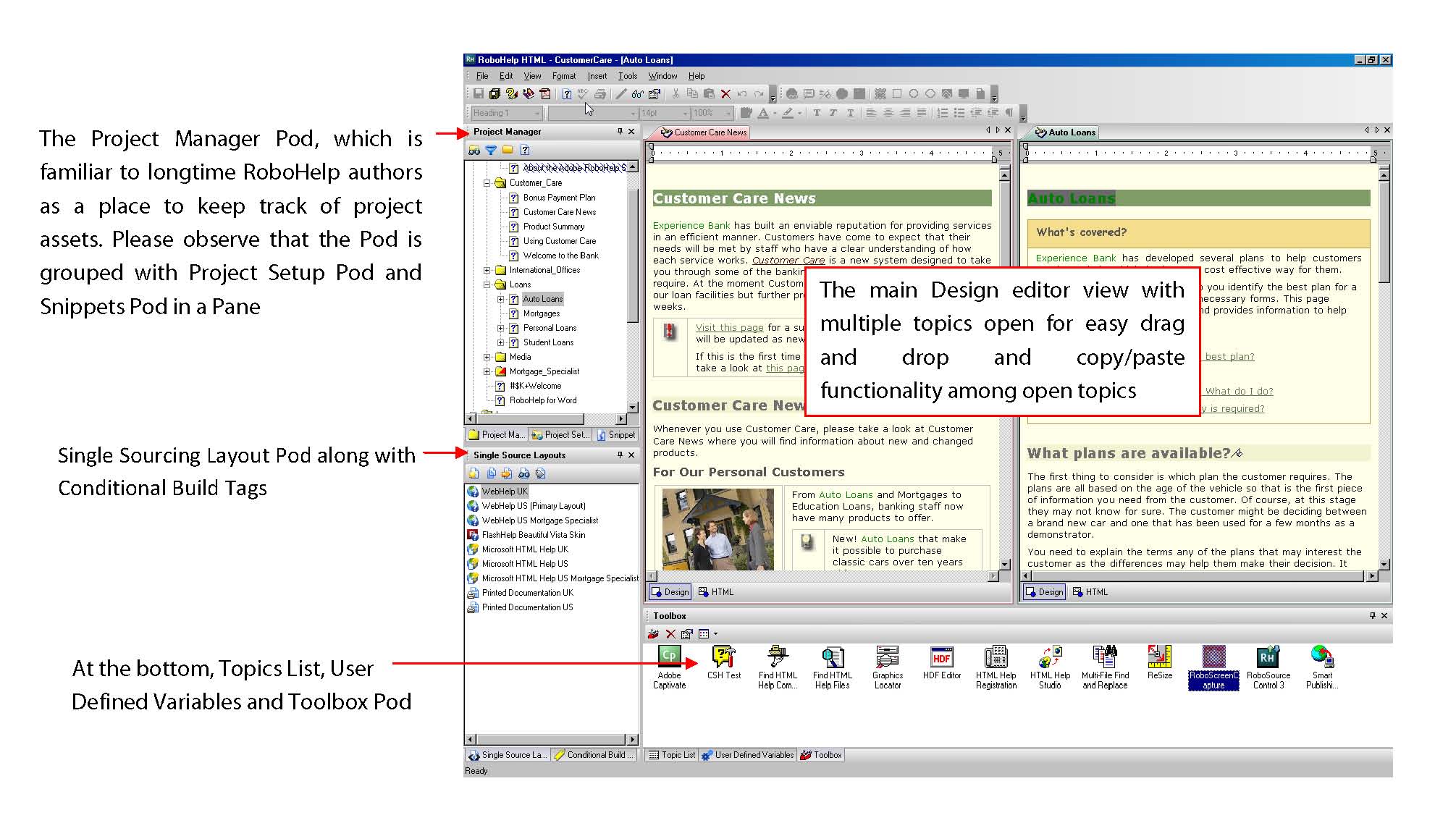Adobe,RoboHelp,UI,Technical Communication,HAT,Help Authoring
As the title suggests, this is the second part of the blog post that I posted on 3rd October. Now that we you are aware about the new User Interface elements, let’s see how can you benefit from them in Adobe RoboHelp 7.
The illustration shows the new look with the multiple document interface (MDI) in the Default Environment. The author can customize the arrangement of pods, menus and toolbars, to create the workspace in which they are most comfortable. After re-arranging the real estate, the author can save different Environments and load them for different workflows. For example, when authoring, you would want fewer items showing in a less cluttered view. Whereas in doing language translation or creating a Table of Contents you would want several items open to be able to drag and drop elements from each.
Pods are new to RoboHelp. Formerly, authors were limited to a work area of static panes that could not be rearranged. Now pods can be easily opened or closed to give the author more screen real estate and eliminate clutter. They can also be dragged and dropped on top of each other to form a group of pods. In the illustration, notice that in the pod titled Project Manager, pods for Project Set-up and Snippets are grouped into one Pane.
RoboHelp lets you take advantage of dual monitors and allows you to place separate pods in any arrangement you like on the second monitor
Let’s now take a detailed look at Adobe RoboHelp 7’s UI (as shown in the illustration above)
- The Project Manager pod which is familiar to longtime RoboHelp authors as a place to keep track of project assets. The TOC, Index and Glossary can now be accessed from Project Manager Pod. There is a change in UI as now Adobe RoboHelp 7 enables you to define multiple TOC, Index and Glossaries in a single project.
- The Project Set-up pod along with tabs for Single Source Layouts and Conditional Build Tags.
- Beneath the Topics List, User Defined Variables and Toolbox tabs.
- The main Design editor view with multiple topics open for easy drag and drop and copy/paste functionality among open topics.
Now we shall see how we can customize the environment in Adobe RoboHelp 7. I believe we have already done a lot of talking, let’s see some action.
I hope you like the customizability of the Environment in Adobe RoboHelp 7. Apart from customizing Pods, Panes etc, you can also customize Toolbars and Menus. I shall cover this under yet another blog post.
Akshay
pageTracker._initData();

